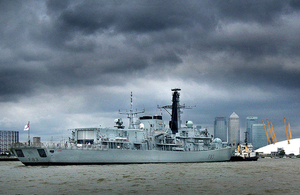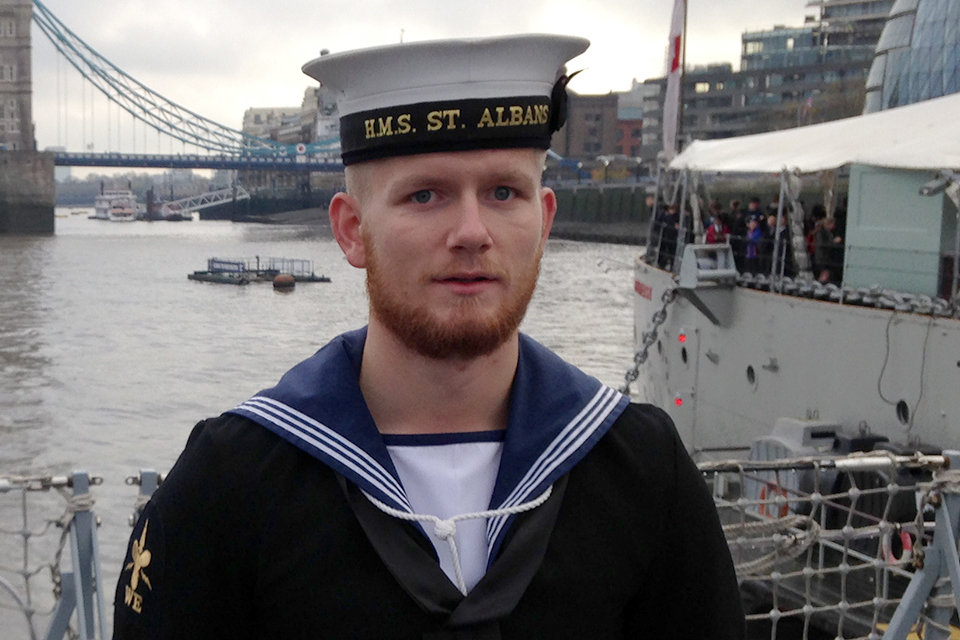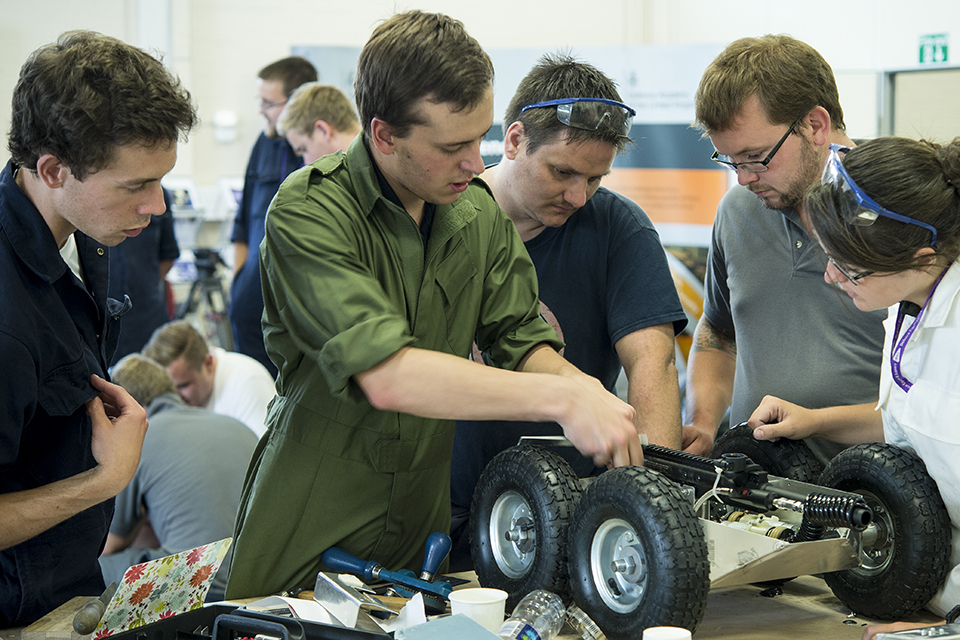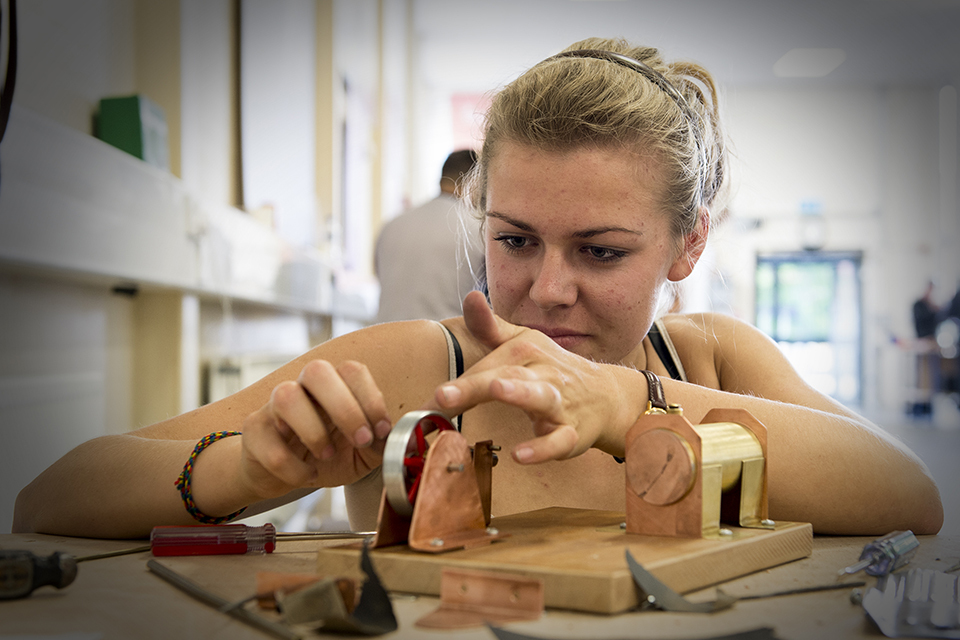Celebrating 100 years of apprenticeships
HMS St Albans has celebrated the contribution that apprentices have made to the nation and to employers over the last century.

HMS St Albans visiting London [Picture: Leading Airman (Photographer) Chris Wenham, Crown copyright]
The Type 23 Frigate, currently docked alongside HMS Belfast on the Thames, hosted an event to recognise the variety of apprenticeships that exist in the UK and the employers that have been providing them since World War 1.
The Ministry of Defence (MOD) is the single largest provider of apprenticeships in the UK with more than 18,000 available every year.
The armed forces and the civil service offer a viable alternative to higher and further education – providing quality apprenticeships allowing students to work and get paid to learn.
One of the apprentices aboard HMS St Albans is engineering technician Dominic Proctor.

Engineering technician Dominic Proctor onboard HMS St Albans [Picture: Jan Kemal, Crown copyright]
As a civilian apprentice technician Dominic found his work a little unfulfilling, so he joined the Royal Navy to broaden his horizons.
Since then he hasn’t looked back. He has worked on a range of weapons, and most recently has been getting to grips with the Seawolf missile system.
He said:
The training is intense and they try to achieve a lot in a short space of time, but its well worth it, and I enjoy it.
I’m hoping to be selected as a fast track engineering technician and after that to gain a degree level engineering qualification, and hopefully get promoted to senior rating.

A team of defence engineering apprentices working on a project during the Tom Nevard MOD Apprentice Competition in August 2014 [Picture: Andrew Linnett, Crown copyright]
The MOD offers apprenticeships in a variety of trades from engineering and construction, to hospitality and animal care – both in the armed forces and fast-track schemes on the civilian side.
More than 95% of new recruits enrol in an apprenticeship every year, with the majority completing their training within 2 years.
Air Commodore Warren James is the head of training, education, skills, recruiting & resettlement in the Chief of Defence Personnel’s Organisation.

A defence engineering apprentice working on a project during the Tom Nevard MOD Apprentice Competition in August 2014 [Picture: Andrew Linnett, Crown copyright]
He said:
Working in Defence offers a vast range of accredited training qualifications and opportunities, to both service and civilian personnel, in more than 300 specialist employment areas.
The MOD hosts the largest apprenticeship programme in the UK with up to 19,000 people on the apprenticeship scheme at any one time, of which some 2,000 are advanced/higher apprenticeships.
This is an incredible, and little recognised, part of the Defence job offer, with something that can be transferred back into civilian life when the time comes.
We continue to train our people in vital and relevant skills, providing benefit to the MOD, the individual, future employers and society in general.
Although apprentices have been around since the middle ages, the range of trades they teach has spread over the last century from the more traditional, such as construction, paper-making and printing, to encompass emerging sectors such as engineering and shipbuilding.
Apprenticeships today continue to reflect the emerging areas in the economy such as retail, business and information technology.
The most popular apprenticeship subject in 2010-11 was ‘customer service’.